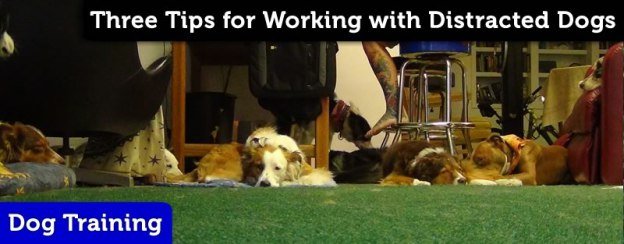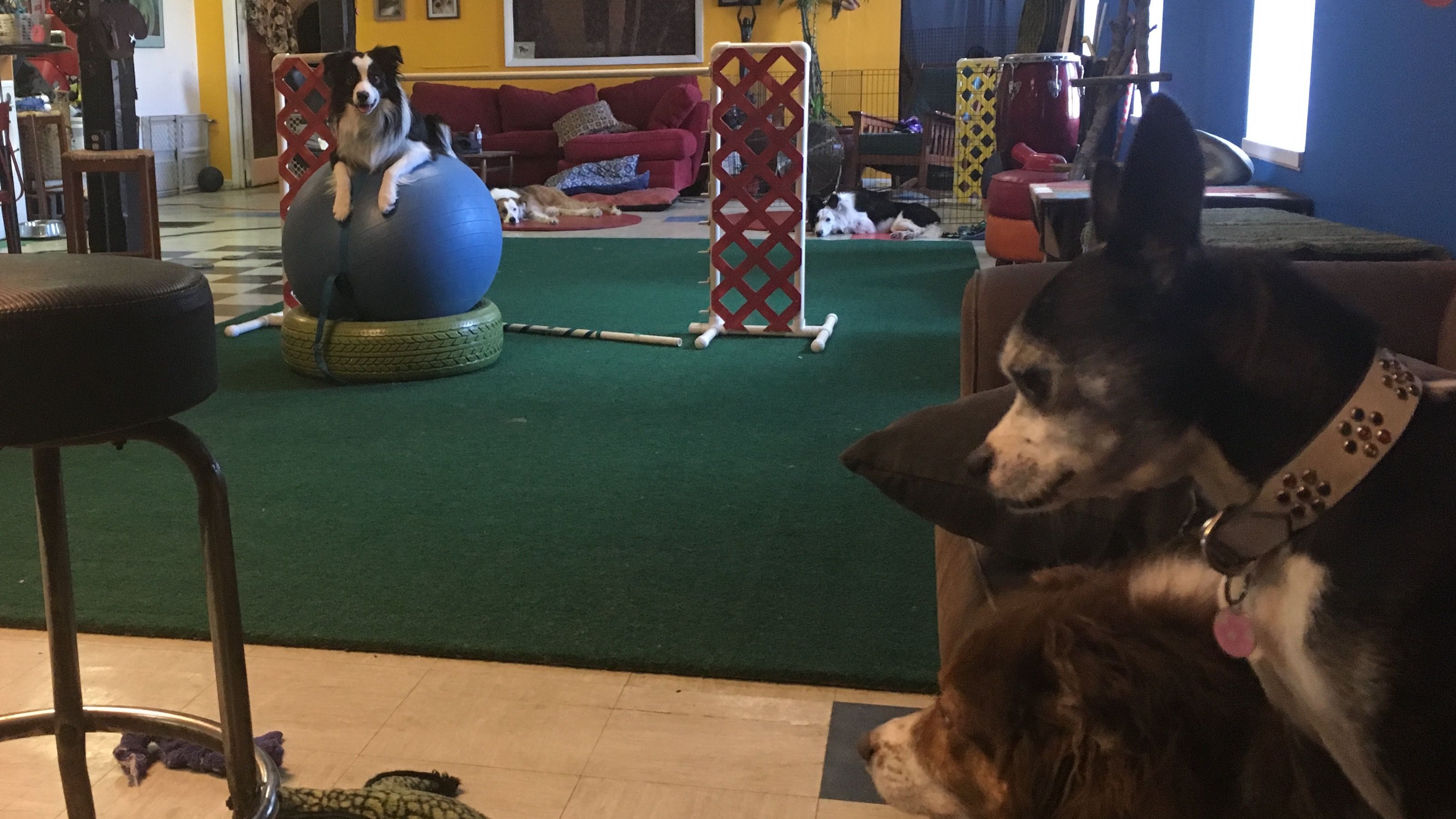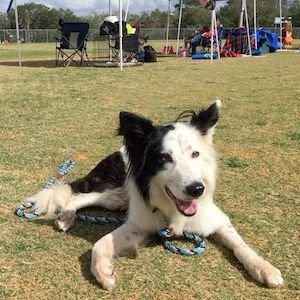
There are a bunch of approaches to handling reactive or distracted dogs. We use the STARR Protocol. It's quite similar to, and borrows heavily from Control Unleashed by Leslie McDevitt. Regardless of what methodology used, here are three simple keys to success with a reactive dog.
Repeat and Re-enter
Once you make it into a room or situation with your reactive dog and the dog is stable (meaning not bonkers), repeat the entry. Repeating the entry allows the dog to start the skill under threshold. This enables the team to get 5 perfect entrances for every 1 loony entry. Giving the dog experience entering the room as a sane canine, under threshold and calm, cool and collected is a huge deal. It sets the tone for the rest of the session.
When guests come over and the dog finally settles down after 10 minutes, have the guests go out and come in again. They will enter into a situation where the dog is under threshold and already acclimated to these new people. The greeting will go much smoother. It's not hard to get a 5 to 1 perfect to imperfect practice ratio using simple repetition.
Problems getting out of the car or getting out of the front door? Just repeat the schtick.
Help the dog experience success in tough situations. Repeat rough entrances and introductions to tough environments.
Nothing Says Chill Like a Silent Cookie
Positive trainers are really awesome at shaping creating behaviors and promoting action, but we're generally pretty bad at reinforcing a calm state of being. Continuos marking and reinforcing of elbows hitting the ground on the down stay, or a hip flop, can have a dog ping ponging between stand and down or flopping around like a fish.
Calm is not an action packed activity .
Look at That, Attention, Down, Head Down, Hip Flop, or whatever actionable criteria chosen to reinforce calm can become an active behavior used to get reinforcement; a competing interest with the distraction or trigger stimulus. Keep the dog busy with these behaviors and use them to desensitize her.

Look at the various stages of chilling out here. Some of these dogs are calm. Some of these dogs are actively working.
But there comes a time when the handler needs to stop working and start chilling out or the dog will learn to bounce around from behavior to behavior expecting a high rate of reinforcement. If she doesn't get reinforcement she looks for alternatives or gets frustrated. The reason that most people can't stop working their reactive dog is that the dogs are conditioned to perform actions and receive a high rate of reinforcement in the presence of the distraction. That's what she expects.
You don't have to mark to give a cookie!

If the dog is lying quietly, or standing there calm and cool, keep your mouth shut, and reach down and pay her.
Dismiss for Proofing
Another thing that is missing from the reactive dog trainers toolbox is a tool to proof a dog's performance in the presence of the trigger stimulus. We use Dismissal for this,"Go do dog stuff..."
Once the dog is stable and capable of handling the environment and you feel pretty good about the situation, dismiss her, "Go Do Dog Stuff..." The handler is now off limits to the dog. She can do anything she wants except work with you. This will be quite confusing for her. She'll stick around and work hard,throwing all the behaviors that have been cultivated in your reactive dog work. Ignore it and she will start to investigate the environment on their own.
Now is the chance to see the actual results of your work. Resist the urge to recall the dog. Only recall in an emergency. Just observe and capture behaviors you would like to see again. Mark and reinforce active behaviors like the decision to not get on the table, putting 4 feet on the floor after being on the table or looking away from a distraction or towards the handler. Use these desirable behaviors as an excuse to bring her back into a game with you, get her high on working with you again, then dismiss. Rinse & Repeat. This will build value for the handler and create a reward history on desirable behaviors when the dog is not being worked.
You can set your criteria at any desired level and can adjust it on the fly as the situation plays out. If another dog is being added to the situation, reduce the criteria to something really simple, like Look at That. If the situation changes and reactivity is likely, use any legitimate behavior can be used as an excuse to bring the dog back in to work with the handler.
On the calm side, capture different states of calm and pay with silent cookies to reinforce that state of being. The state of laying down, the state of standing calmly, or the state of sniffing the ground. When you see these behaviors going on, walk over and pay your dog without a marker.
Dismissal can happen on Leash. It means "the handler is off Limits" not "leave the handler".
Posted from my blog with SteemPress : http://pvybe.com/dog-training-blog/three-tips-for-working-with-distracted-dogs/

Originally Posted @
Pawsitive Vybe
GoDoDogStuff